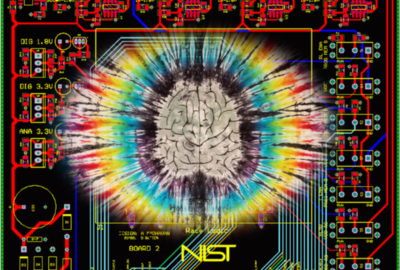Why two big software vendors decided they needed one another
Software manufacturers routinely tie up with resellers to get their foot into the federal market. It may have to do with artificial intelligence.
Software manufacturers routinely tie up with resellers to get their foot into the federal market. So why would a software company that is already in every department, sign-up with another reseller after 50 years in the market? It may have to do with artificial intelligence. For more on software distribution and technology trends, the Federal Drive with Tom Temin talked with the Vice President of Global Channels for SAS, John Carey. And with the VP of Intelligence and Innovative Solutions at Carahsoft, Michael Shrader.
Interview Transcript:
Tom Temin And let’s begin briefly that there is this new reseller agreement, and these happen all the time. But this one seems a little more significant just because of SAS footprint.
John Carey In all honesty, we see Carahsoft as a force multiplier for SAS and where we believe we can go in the US federal and state and local markets. We went through a lengthy assessment of the leading government distributors and Carahsoft one hands down. And as we are re-architecting our business for the next 50 years, as we are making the kind of changes we need to be available to both our existing and future customers, we need to pick the right partners who can help us engage with those customers, with the right networks of ecosystems that can deal with that. And Carahsoft brings that to the table in abundance. Not only their knowledge of the market, their ecosystem of government certified and government knowledgeable resellers, but also a real knowledge and engagement in what we at SAS do and a willingness to work with us.
Tom Temin And Michael, is it a simple matter of distributing shrink wrap boxes? And that dates me, I know it doesn’t happen that way anymore. Is there some value add here?
Michael Shrader There’s lots of value add. We’re preparing to invest heavily in our partnership with SAS. Not to correct you, but it’s a little more than a simple resell arrangement. It’s a full scale distribution program where we are enabling a network of resellers to be successful, helping the government be successful with SAS solutions. So there’s a full fledged marketing program and market education program. There’s our suite of contract vehicles that we’re looking to make SAS available to customers on, and then that portal partner network to include the SI community, the VAR communities, to include the different cloud service providers and their ecosystems. So it’s a pretty large scale effort and investment on our end.
Tom Temin Yes. So software availability to the government is a multi tier, I guess, arrangement because as you mentioned distribution then to the resellers and then on. So will this get SAS into smaller agencies, perhaps that may not have have the wherewithal technically to contract directly with some pretty sophisticated. This is not word processing software.
John Carey Yes absolutely. From our side, what Carahsoft provides is that ecosystem of partners that can meet government customers where they are, with the service that they need. Whether it’s the configuration of the solution for the operation and engagement by individuals in that government department or federal agency, or whether it’s serving those outcomes and managing that on behalf of that state and local government. What’s important to us is bringing the power of data and AI to government agencies at all levels to improve citizen outcomes. And we do that with the vehicles from Carahsoft, but more importantly, that ecosystem of SI’s, the value added resellers, service providers that Carahsoft bring. They have intimate understanding of the government customer need, and they have grown up in this space. So they have a way to rapidly deploy and bring value to the client. We could ultimately bring, but it could take us longer and we’d have to staff up, and that would delay getting to those positives outcomes.
Tom Temin And I wanted to ask you, Michael, what kinds of demand signals, what are you seeing in the market that is changed by the arrival, really the dump truck dumping of artificial intelligence information across the federal government? Nobody doesn’t have a conversation without AI in it these days.
Michael Shrader Yeah. And I would say there’s still a decent amount of noise around the topics and concepts within AI. It’s nice to have a sort of flagship brand like SAS who sort of has grown up and have helped developed a lot of those concepts, leading the charge around those discussion areas. We’re seeing over the last 18 months or so as the generative AI explosion is dominating those discussion areas, the government is finally able to adopt a more ubiquitous application of AI. Not that there’s the custom bespoke solutions that we’ve been seeing for the last 5 to 8 years aren’t valuable, but it has slowed the adoption. The government is not very good at the art of the possible when it comes to platform. Hey, go build it. yourself. Go define the use case and build the application. Gen AI brings that ubiquitous use case across the entire government ecosystem. So we feel like this is a gateway into other use cases that are now being talked about as well.
Tom Temin We’re speaking with Michael Schrader, Vice president of intelligence and innovative solutions at Carahsoft, and with John Carey, the vice president of global channels at SAS. And, John, let me ask you this. The generative AI use case in a definitive domain, say, like a government agency is actually a better use case in some ways, technically than the open public generative AI, which we all know with the hallucinations and the bizarre results and the worsening over time, because of the way those were trained is very different than you would train your model in a federal agency, which might give you better results.
John Carey Absolutely. Think about it as in the public domain, it’s a mile wide, an inch deep. In the federal domain, it’s a mile deep but an inch wide. So the efficacy of the models that you’re training on the SAS platform are going to be informed by that. And the benefit of SAS is when not a large language model provided where it dates an AI platform, where the use cases that can be plugged in. And I’ll echo Michael’s words, we are on the very top of the generative AI hype curve right now. There is a significant amount of noise and promise out there, and frankly, there should be a significant amount of noise of promise out there. But agencies and customers are looking for the kind of vendors with a proven track record who’ve understood neural networks 20 years ago. I work with people with multiple PhDs who, when you say generative AI to them, say, do you mean neural networks from 20 years ago, you kind of look them and go, well, I guess I do. Yeah, sorry. We’re finally catching up to what you guys were studying and building way back in the day.
John Carey Brian Harris, our CTO, says this very well. One of the potential legacies of generative AI is changing how we interface with computers, changing how we interface with data. In that you can go from looking at a static dashboard or a dynamic dashboard that is built by models through visual analytics, to now having an interactive chat, initially via a chat bot. Ultimately, just like you would talk to a device like your phone asking questions, we have the natural language programing speech to text, text or analytics. So all of those elements become available to the government agency to actually take air out of the process and compress time to actual value for the user of the data. And I think that’s what’s exciting and important. And we do this with an ethical framework where we can look at the data and say, hey, the data is a little too oriented around a certain demographic, and we need to broaden that demographic in order to ensure that we’re not bringing some of the mistakes of our past into some of the model decisions of our future. We do this successfully. Reggie Townsend speaks often about ethical frameworks within AI and how to use AI ethically, and we build that into the platform. And again, that’s why our partnership with Carahsoft and our access to Carahsoft resellers brings best of breed technology with best of breed partners to get quick solutions to our customers.
Tom Temin And Michael, I wanted to ask you to I mentioned shrink wrap boxes before. I was kind of kidding because I don’t think anyone distributes software that way anymore. But for the smaller clients, the smaller independent agencies or bureaus that might want to get into this type of work with SAS, is this a cloud? Is it your own hosting? All of the above. What are the models by which the sales and licensing models by which they can acquire this?
Michael Shrader I would say SAS is making all the right investments as far as flexible deployment for customers of all sizes, shapes, breeds. There’s the on prem deployments that have sort of traditionally been the foundation of a lot of SAS deployments. SAS has moved towards a cloud based model and is aligned with lots of the big cloud service providers. Microsoft Amazon has made some big announcements and some big bets with SAS, so we like seeing that flexibility in the market given the customer preference of whether they host it on prem with super sensitive data, or because of prior infrastructure investments or investments in their cloud infrastructure. And then the last point I would make is we’re very encouraged by SAS’ willingness to invest in FedRAMP and state Ramp and the impact levels on the DoD side. That’s just a reality of our future as a country deploying technology, maintaining those security standards and making sure that all of our software providers are delivering products that are of the utmost security for our government to consume. We’re very encouraged by SAS’ roadmap towards those security standards.
Tom Temin And just a final question. If someone wants to use the software in a sandbox or development type of way, but not production. Is there a model for that from a sales and licensing standpoint that they could then convert to production later on? Because they may want to just play with it.
John Carey Yeah. So actually and more coming. So I would encourage people to look at the announcements coming from our innovate event in April. First thing to say is via our platform is cloud native. So it’s built for the cloud. It can be deployed wherever the customer needs it. It is wrapped in Kubernetes so it can be deployed on local servers in a container environment. It can burst to the cloud. It can be in a federally appropriate cloud. It can be in a public cloud, it can exist anywhere. And you’ll get the same power of SaaS wherever you deploy it. And as Michael said, with our relationships with Microsoft, AWS, Red hat, snowflake, all vendors that Carahsoft represent and support, you get to try in a number of ways through proof of concept, through looking at early releases. Actually, when you buy the product, you have the right to deploy a dev environment so that you can keep working in a non-production environment. You will never force you to test your hypotheses in a production environment. We know that’s a risk factor for a government customer. So yeah, we’re all about Carahsoft. That is really helping us learn most effectively here. Taking as much friction out of the process from try to buy as is humanly possible while meeting the specific requirements of the federal or state and local buyer.
Copyright © 2025 Federal News Network. All rights reserved. This website is not intended for users located within the European Economic Area.
Tom Temin is host of the Federal Drive and has been providing insight on federal technology and management issues for more than 30 years.
Follow @tteminWFED






